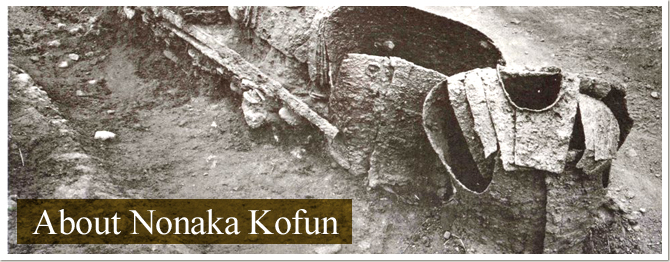Tools and stone objects
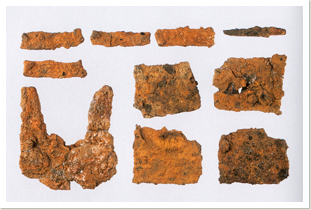 Photo 1: Tools and farming implements |
In addition to weapons and armor, excavations of Nonaka Kofun produced a large number of iron tools, farming implements, and stone objects (photo 1), including 30 axe heads, 45 fragments of drill-bit-shaped implements, and 35 sickles, which are believed to have been used for harvesting or cutting, as well as U-shaped bladed hoes and spades, chisel-shaped iron tools, and spear planes for smoothing wood. Around the time of Nonaka Kofun, U-shaped bladed hoes and spades, which made it easier to break up hard soil, represented advanced farming technology introduced from the Korean Peninsula. |
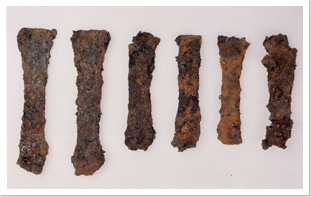 Photo 2: Tettei (iron ingots) |
The discovery of over 36 kilograms of tettei (iron ingots) from Nonaka Kofun has drawn Considerable attention (photo 2). Japan during this time was heavily dependent for its iron on the Korean Peninsula, which had abundant iron resources. It is assumed that the tomb owner must have had iron materials in quantities far greater than what was buried. |
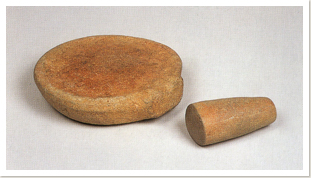 Photo 3: Stone quern and pestle |
Cinnabar was used in ancient Japan for funeral ceremonies. Stone querns and pestles were used to refine cinnabar (photo 3). |
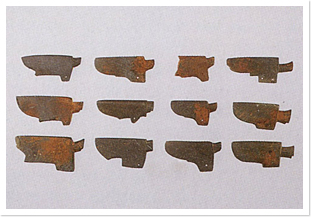 Photo 4: Knife-shaped stone imitation goods |
Talc goods created in imitation of axes, sickles, comma-shaped beads (magatama), and spindle whorls have been excavated. It is believed that these imitation goods were used for the funeral ceremonies of influential persons. Photos 1-4 reproduced from "Nintoku
Tennō-ryō Kofun Chikuzō (Building Emperor Nintoku's Kofun)" (Sakai City Museum, 2009) |


